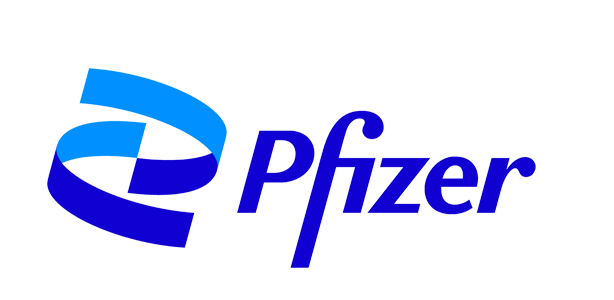Erenumab (previously known as AMG 334), a calcitonin gene-related peptide (CGRP) receptor antibody, not only reduced monthly migraine days compared with placebo, but also showed no differences for serious or nonserious adverse events versus placebo groups in these two trials. According to CGRP Forum Co-Editor Professor Peter Goadsby, who presented results from the STRIVE trial1, the lack of difference in adverse events is important, when considering the burden of side effects with current migraine therapies. Amgen has now submitted a Biologics License Application to the U.S. Food and Drug Administration for erenumab to prevent migraine.2
About STRIVE
STRIVE was a randomized, stratified, double-blind, placebo-controlled, parallel-group, multicentre study, (followed by an active-treatment phase) in adults with one-year history of episodic migraine who had currently, previously or never received migraine prophylactic medication. Eligible patients had on average a migraine frequency of ≥ 4 and < 15 migraine days per month and a headache frequency <15 headache days per month across the 3 months prior to screening and baseline. Patients were randomly allocated to treatment with erenumab 70 mg or 140 mg (given as a subcutaneous monthly regimen) or placebo treatment group during the double blind treatment phase.3
The trial enrolled 955 evaluable patients: 317 allocated to 70 mg, 319 allocated to 140 mg and 319 allocated to placebo. Across the three groups, the vast majority of patients were women (85-86%) with a mean age of 41 years).
Treatment with erenumab led to significantly greater reduction in monthly migraine days (from baseline to weeks 13-24) by 3.2 days and 3.7 days versus 1.8 days with placebo (the primary endpoint, p<0.001). Furthermore, 43.3% of patients in the 70 mg group and 50% in the 140 mg group had at least 50% reduction in monthly migraine days versus 27% of the placebo group (odds ratios [ORs], 2.13 and 2.81). There were also greater reductions in the number of days involving use of migraine-specific medications (1.1 and 1.6 days versus 0.2 days on placebo, p<0.001). In addition, use of the Physical Impairment and the Impact on Everyday Activities scores on the Migraine Physical Function Impact Diary showed greater improvements with erenumab compared with placebo (p<0.001).
Serious adverse events were reported by 2.5% of patients in the 70 mg group, 1.9% in the 140 mg group, and 2.2% on placebo. The most common adverse events were nasopharyngitis and upper respiratory tract infection.
 In a subsequent session, CGRP Forum Co-Editor Professor David Dodick presented results from another trial, ARISE.4
In a subsequent session, CGRP Forum Co-Editor Professor David Dodick presented results from another trial, ARISE.4
About ARISE
ARISE evaluated the efficacy of erenumab 70 mg (as a subcutaneous monthly regimen) in patients with episodic migraine (defined as ≥ 4 to <15 migraine days per month with < 15 headache days per month).5 The trial enrolled 577 patients: 286 to erenumab 70 mg and 291 to placebo. As in STRIVE, most patients were women (85%, mean age 42 years). At baseline, the study population had 8.3 mean monthly migraine days.
Compared with placebo, treatment with erenumab 70 mg led to:
- Significant reduction in mean monthly migraine days from baseline to weeks 9-12 (2.9 versus 1.8 days, p <0.001);
- Significantly greater proportion of patients with at least 50% reduction in mean monthly migraine days (39.7% vs 29.5%, odds ratio 1.6; p=0.01) and
- Significant reduction in acute migraine-specific medication days (1.2 vs 0.6 days, p =0.002).
The profile and frequency of adverse events was similar between the groups. The most commonly reported adverse events in each group were upper respiratory tract infection (6.4% vs 4.8% on placebo), injection site pain (6.0% vs 4.2%) and nasopharyngitis (5.3% vs 5.9%).
The key outstanding questions for the novel monoclonal antibodies to CGRP and its receptor will be their efficacy outside the setting of clinical trials in the wider community of patients with migraine, as well as long-term safety.
References
- Goadsby P. Phase 3, randomized, double-blind, placebo-controlled study to evaluate the efficacy and safety of erenumab (AMG 334) in migraine prevention: Primary results of the STRIVE trial. Presented at: 2017 American Academy of Neurology Annual Meeting. April 25, 2017; Boston, USA.
- Press release 18 May 2017. Amgen Submits Biologics License Application To The FDA For Erenumab. http://www.amgen.com/en-gb/media/news-releases/2017/05/amgen-submits-biologics-license-application-to-the-fda-for-erenumab/
- Study to Evaluate the Efficacy and Safety of AMG 334 in Migraine Prevention (STRIVE). ClinicalTrials.gov Identifier: NCT02456740. https://clinicaltrials.gov/ct2/show/NCT02456740
- Dodick D, et al. A phase 3, randomized, double-blind, placebo-controlled study to evaluate the efficacy and safety of erenumab in migraine prevention: primary results of the ARISE trial. Presented at: 2017 American Academy of Neurology Annual Meeting. April 25, 2017; Boston, USA.
- Study to Evaluate the Efficacy and Safety of AMG 334 Compared to Placebo in Migraine Prevention (ARISE). ClinicalTrials.gov Identifier: NCT02483585. https://clinicaltrials.gov/ct2/show/NCT02483585






 In a subsequent session, CGRP Forum Co-Editor Professor David Dodick presented results from another trial, ARISE.4
In a subsequent session, CGRP Forum Co-Editor Professor David Dodick presented results from another trial, ARISE.4